Wire cooling racks are one of my essential baking tools. Keep reading to find out why you need them in your kitchen!

Table of contents
Why You Need Wire Cooling Racks for Baking
You’ve likely noticed that most recipes on BoB and many other sites direct you to place hot pans and freshly baked goods on a wire rack. That may seem like an unnecessary step with an unnecessary piece of equipment, but it’s actually quite important.
Wire cooling racks are an essential piece of equipment for bakers. They provide the best way to allow baked goods to cool more quickly and efficiently while preventing excess carryover baking. If you’ve never used one, I encourage you to try using one the next time you bake. I think you’ll come to find them indispensable!
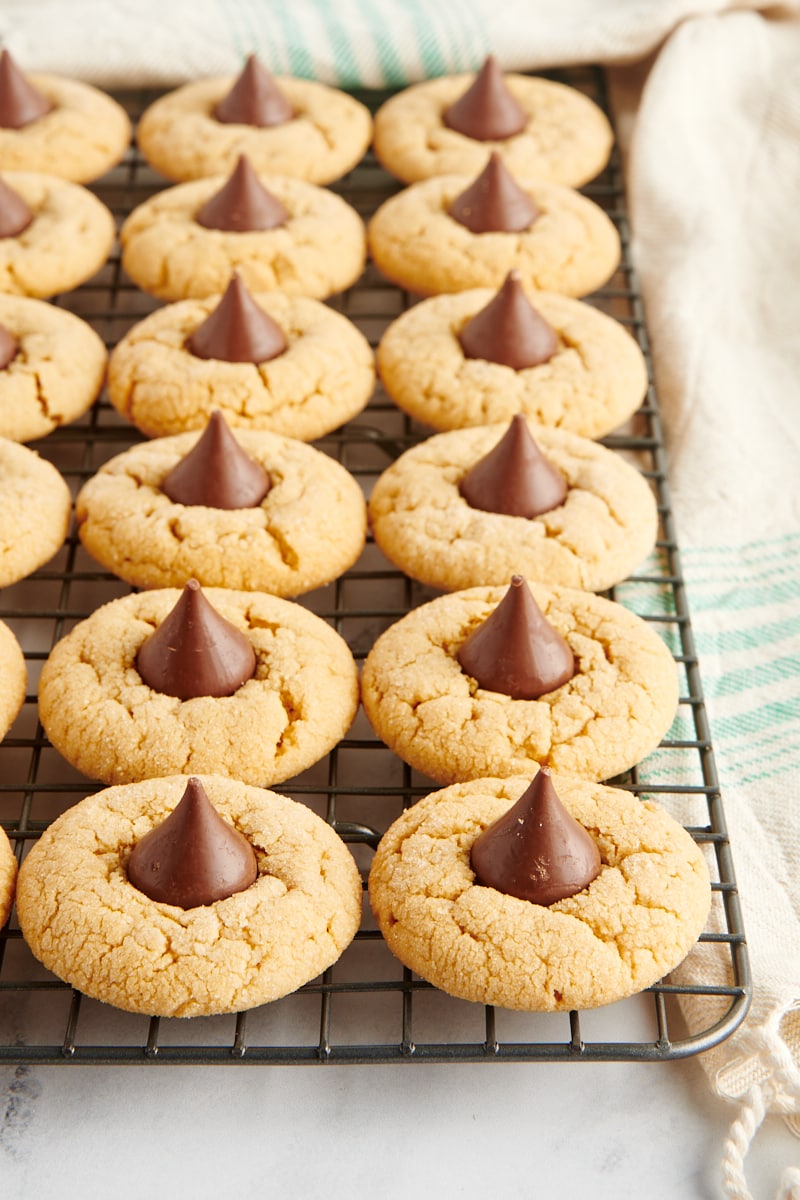
What’s the Purpose of a Cooling Rack?
So, why do you need a cooling rack? It’s simple, really. If you place a pan on a trivet or on your countertop, air doesn’t reach the bottom of the pan. A wire rack allows air to circulate completely around whatever is on it. This means that the pan or baked good will cool faster than if simply left on a countertop or a trivet.
A hot pan will continue baking whatever is inside it, so faster cooling prevents over-baking. That extra bit of baking that comes from leaving something in a hot pan is called carryover baking. A little of that is expected, but mitigating it is important.
Most recipes for cookies, cakes, or muffins will direct you to place the hot pan directly onto a cooling rack for a specified amount of time for the initial cooling phase. Then, once that time has passed, often the baked goods are transferred directly to the cooling rack to finish cooling. That final cooling step will keep away any accumulating condensation and steam, so your freshly baked treats won’t get soggy.
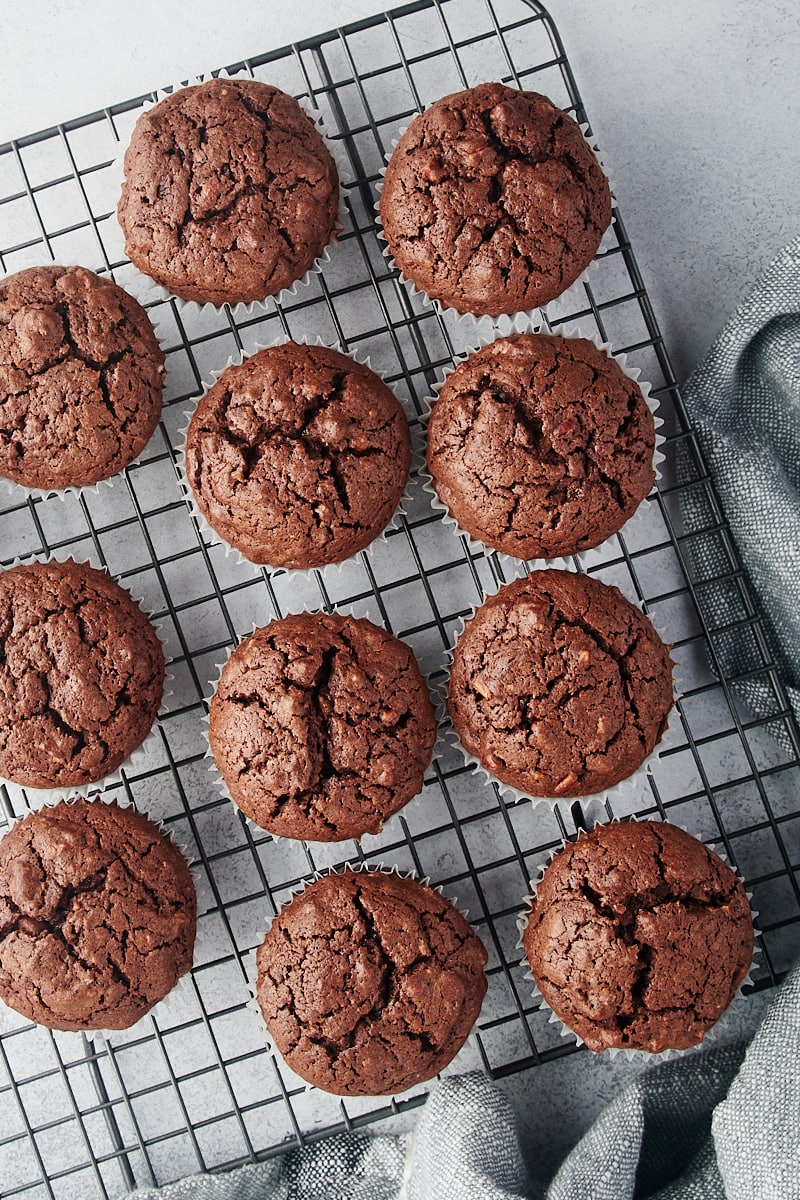
How to Transfer Baked Goods to a Wire Rack
When it’s time to transfer your baked goods from the pan to the rack, that process depends on what you’ve baked.
- Cookies: Simply use a small spatula to transfer the cookies directly to the cooling rack. A spatula will help keep the warm cookies intact during the transfer.
- Cakes: Invert a wire rack onto the top of the cake pan. Flip the rack and pan (That pan is still pretty warm, so don’t forget your oven mitts!) simultaneously so that the cake releases from the pan and onto the rack. That can be a bit tricky to coordinate, especially for big pans like Bundt pans, but it’s the way that works best for me.
- Cupcakes and muffins: Use a knife to loosen them from the pan if directed to do so. Use the knife or your fingers to remove them from the pan and onto the rack.
- Lined pans: With some recipes, you may have lined your pan with parchment paper so that you can lift the finished bake out of the pan an onto a cooling rack. This is a handy way to get bars, quick breads, and many other baked goods out of the pan and onto a rack to start cooling.
Of course, if you’re baking pies, cobblers, cheesecakes, or something else that doesn’t get removed from the pan for cooling, just place the pan on the rack and let it cool completely. That air circulation will still help cool the pan more quickly.
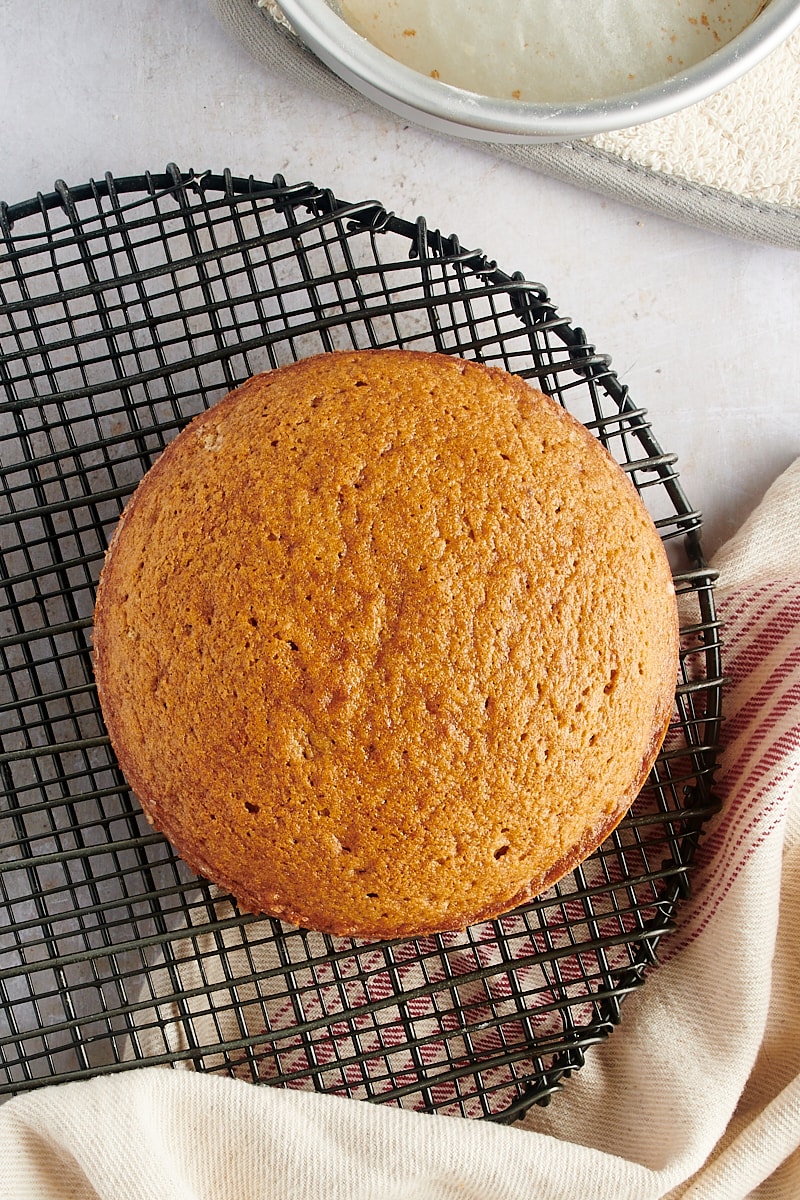
How Many Cooling Racks Do I Need?
How many racks you need will vary depending on how much you usually bake at one time. For large batches of cookies, for instance, a few racks are nice to allow ample space for all the cookies to cool. Otherwise, I can usually get by with using two. One is for the pan itself, as it cools for a few minutes before transferring the cookies. The other is for the cooling cookies. The cookies can be very close together on the rack, so you can actually fit a lot on one rack. Then as the first batch cools on the rack, you can remove them to a storage container or serving plate to make room for freshly baked ones.
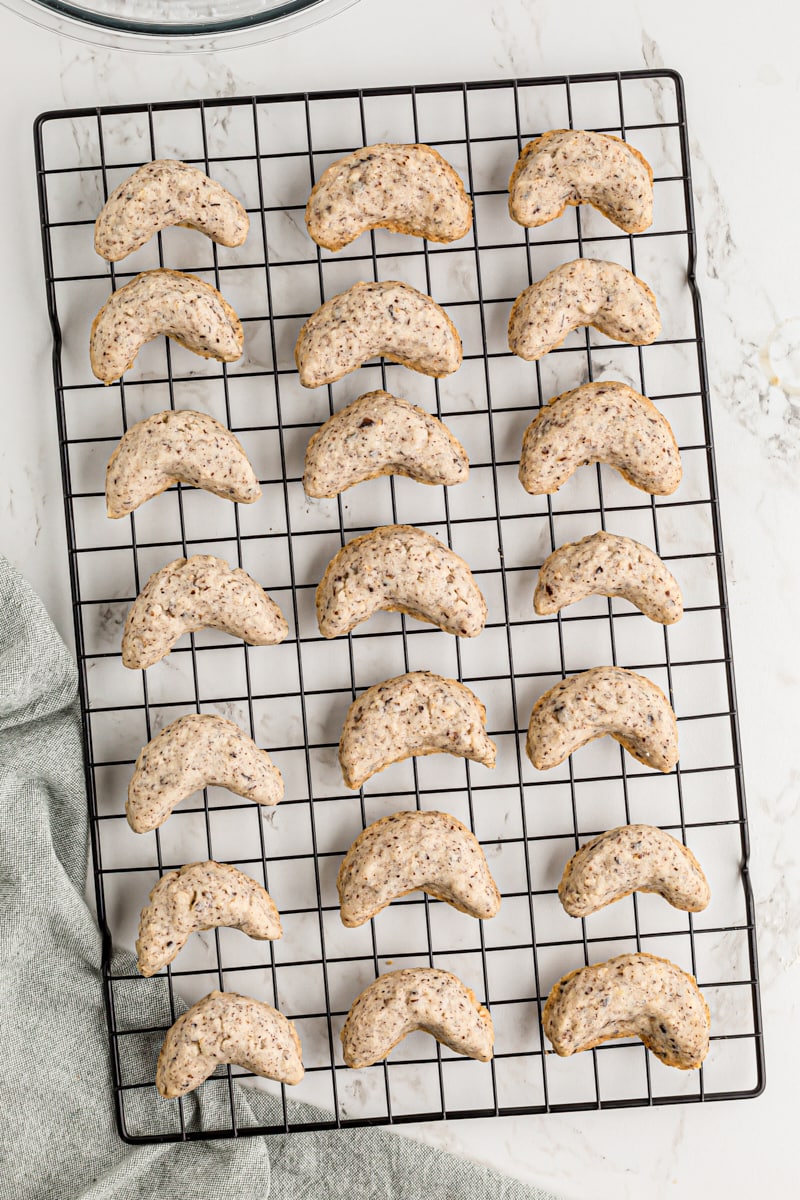
Types of Cooling Racks
Most cooling racks are made of heavy duty metal and may have a non-stick coating. The wires are in either a parallel or grid pattern. Both are theoretically functional, although racks with parallel wires instead of a grid pattern can allow baked goods to sag between the wires and leave crease marks on the bottom of baked goods. A gridded rack provides more support and is less likely to leave marks from the wires. The grid pattern is definitely my preference.
You’ll find that wire cooling racks are available in multiple sizes and shapes. Round cooling racks are designed for cooling round cake layers. Rectangular racks offer the most versatility, as they can be used for cake layers as well as other baked goods like cookies and muffins. If you’re going to get just one rack, make sure it is larger than the biggest pan or baked good you would place on it.
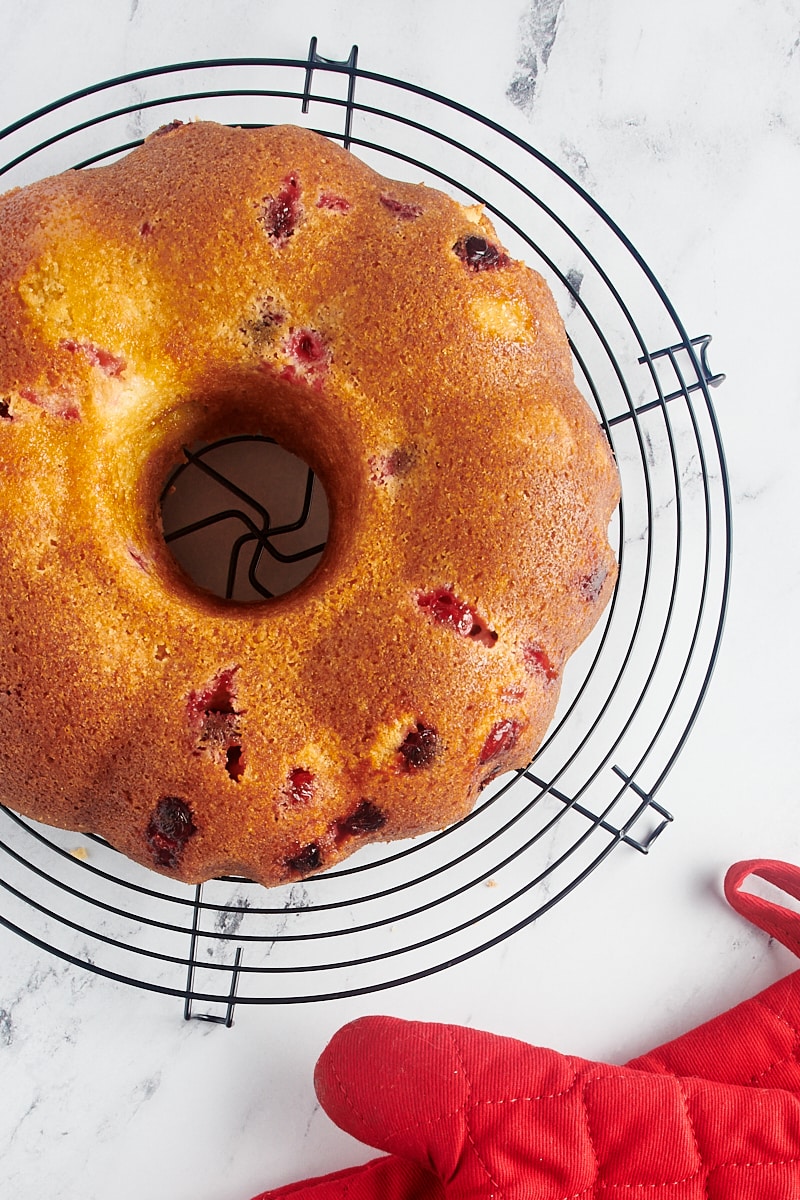
If counter space is a concern, some cooling rack sets stack as tiers so that they take up less counter space. These are great if you’re diving into a big day of baking.
I recommend that you think about the kinds of baked goods you make the most often and your available counter space when shopping for cooling racks. Of course, storage should be a consideration, as well. Luckily, most racks can store alongside baking sheets or even nested inside a baking sheet. As I said earlier, you can likely made do with just one or two racks. I have a few, as I do a lot of baking and I also use them for photos.
Most any brand will do if it’s nicely sturdy. The one I use most often is this Chicago Metallic extra large rack. I have had it for many years, and it’s still in great condition. It has small feet on it to keep it elevated. There are others with legs that fold in for storage, but I like the simplicity of the small stationary feet.
How to Clean Your Cooling Racks
Follow the cleaning directions included with your specific racks. As a general rule, I don’t put mine in the dishwasher. Hand washing usually works just fine. A bit of dish soap on a brush will usually do the trick quickly and easily.

Other Uses for Wire Racks
While I most often use wire racks for cooling, there are other great uses, too. They’re the perfect tool to help with adding a glaze or other wet topping to baked goods. Place whatever you’re glazing on the rack with a sheet of waxed paper or parchment paper underneath. Add the glaze and let it drip off the sides. No pools of glaze awkwardly stuck to the bottoms!
They work the same way for small things you might dip into a glaze. Set them on the wire rack and let the excess drip off the rack onto the paper underneath.
Depending on their material, some racks can be used in the oven nested inside a baking pan. This is often done when roasting to allow better heat circulation and a place to catch drippings. Be sure your rack is oven-safe before using it this way. They may be labeled as baking racks instead of cooling racks.
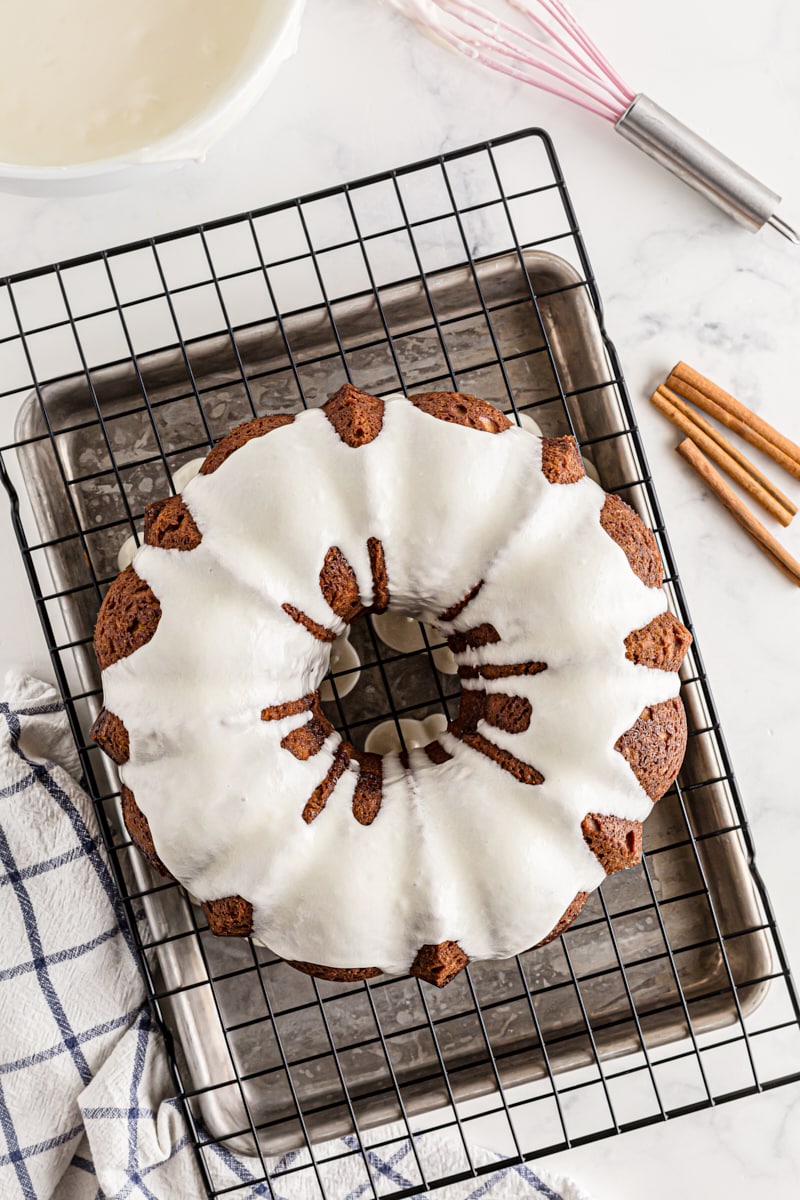
Substitutes for Cooling Racks
I highly recommend owning at least one cooling rack if you do much baking. They’re by far the best tool for the job. However, if you aren’t quite ready to purchase one, you can make do with some things you may already have in your kitchen. These options will help with that initial cooling step, but don’t really solve the issue of where to put your baked goods for the final cooling.
- Cookie cutters – Scatter metal cookie cutters of similar heights on your countertop, and carefully place the baking pan on top of them. This works with canning rings, too. You may want to put something nonslip (like a silicone mat) underneath the cutters to keep them from sliding.
- Aluminum foil – You can shape foil into a few balls or cylinders to create a space for cooling your pans. Like cookie cutters, you may want to put a nonslip mat underneath the foil.
- Muffin pans – Turn a muffin pan upside down and place your hot pan on top.
- Another rack – Use a clean metal rack, like from your toaster oven. You can also try using an unused rack from your oven or grill. If you want to put any baked goods directly onto these racks, make extra sure they’re clean or cover them with paper towels or parchment paper.
More Baking Tips and Tricks
Ready to learn more? Here’s some further reading if you’d like to learn more about baking.
Bake or Break is a participant in the Amazon Services LLC Associates Program, an affiliate advertising program designed to provide a means for us to earn fees by linking to Amazon.com and affiliated sites.

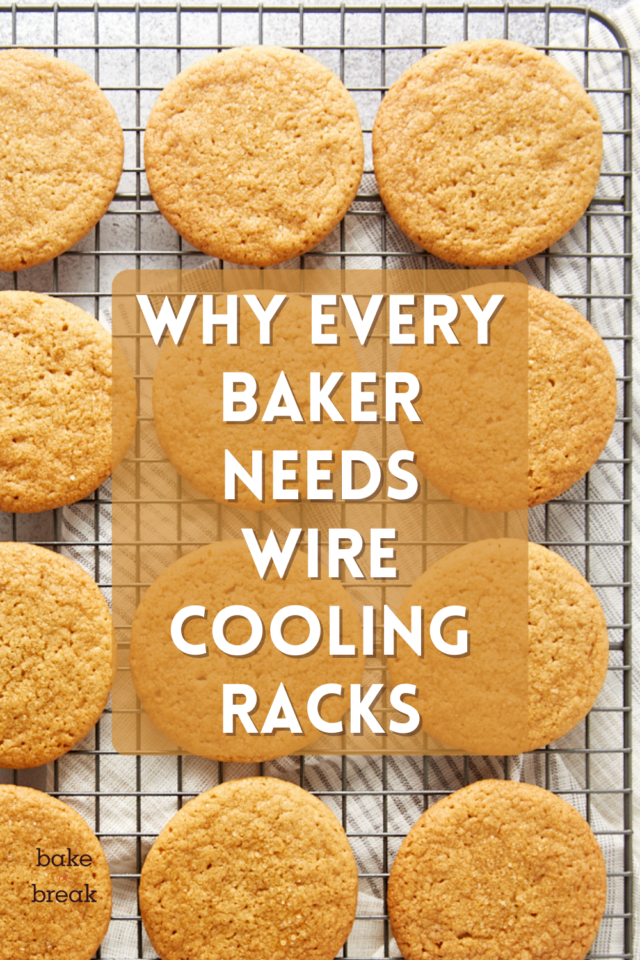
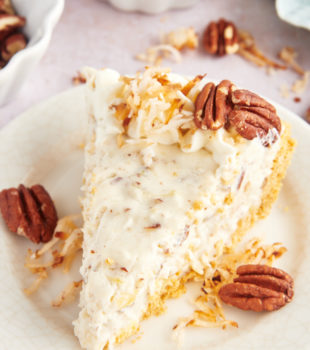
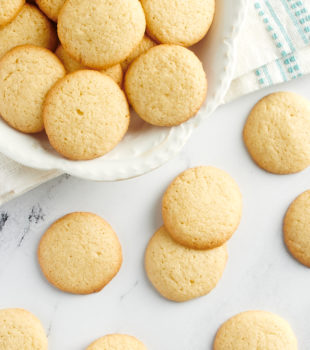
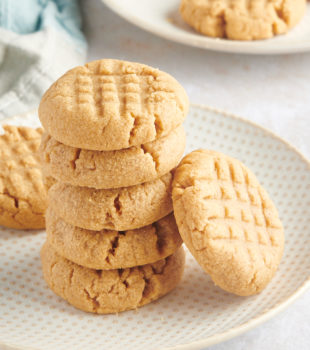


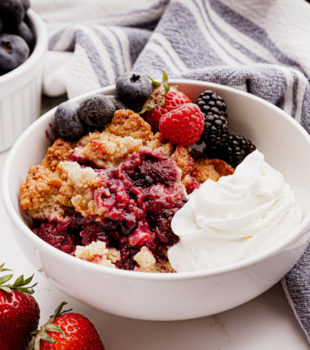
10 Comments on “Why Every Baker Needs Wire Cooling Racks”
I love my cooling racks! Wouldn’t do without them. Welcome Back, Jennifer! Thank you for the great tips and links.
My pleasure, Marla! 🙂
Love love love your cooking tips Jennifer! Since retirement I have found my new hobby…baking! I now have the time and pleasure of making wonderful goodies in my kitchen, and am looking forward to your tips. Thank you for sharing them with us!
Thank you, Patsy! It sounds like you’re making the most of your retirement!
Thanks for the information on the wire cooling rack.
I have one from Bellemain, working impressively.
Hello!
I just happened upon your site and I’m so excited to explore all your content.
A quick inquiry about the round cooling rack, what brand is it and where can I find it. I love the look of the extra grids and the wired edges.
Thank you! Janet
Hi, Janet! I’m glad you found me! I’ve had that round rack for a while. I think I got it at World Market, but I’m not sure if they still stock it. You can likely find something similar at a kitchen store or at Amazon.
Great article! I have my late mother’s racks plus more I have bought over 54 years of marriage. Our two kids both want all of them! Finding high quality new ones is not easy, and they’re never inexpensive, but they are essential.
Cooling racks are also excellent stacking aids: Put one rack on top of a bowl in the refrigerator and another bowl can sit on top! Both of our adult kids want all of my cooling racks; I’ve bought them as I’ve seen them, as they have become harder to find in recent years.
That’s a good point, Ann! I wish I had that much refrigerator room!